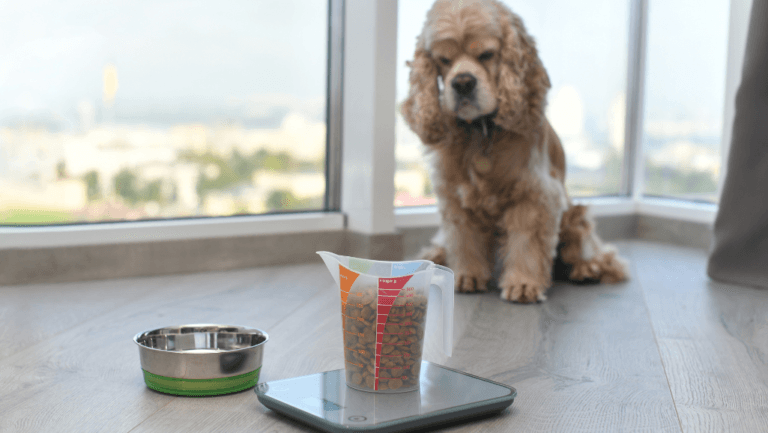Parasitic infections in dogs can cause serious health problems if not treated. Common parasites like fleas, ticks, and worms can lead to symptoms like fatigue and weight loss. It’s vital to know canine parasite remedies and how to control parasites in dogs.
This guide will show you how to spot parasitic infections, deworm your dog, and use natural remedies. By being proactive about your pet’s health, you can prevent harm and keep your dog happy.
Internal parasites are a big problem in dogs, often in young puppies. Regular checks and deworming are key to prevention. Dogs can get parasites from contaminated food or water. If your dog shows signs of infection, see a vet quickly to avoid serious health issues.
To prevent parasites, deworm at-risk dogs regularly and control fleas to stop tapeworms. Use heartworm prevention and avoid mosquitoes. Also, feed your dog probiotic-rich foods and prebiotics to help their immune system fight off infections.
Key Takeaways
- How to Treat Parasites in Dogs.
- Identify common symptoms of parasitic infections in dogs, such as fatigue, weight loss, and digestive issues.
- Understand the importance of regular screenings and deworming treatments for puppies and at-risk dogs.
- Explore various dog deworming methods and natural remedies for dog parasites.
- Implement preventive measures like flea control and heartworm prevention to protect your dog from parasitic infections.
- Incorporate probiotic-rich foods and prebiotics into your dog’s diet to promote a healthy gut balance and boost their immune system.
Understanding Common Types of Canine Parasites
As a dog owner, knowing about common parasites is key. Fleas, ticks, and worms can harm your pet. They can cause everything from mild discomfort to serious illness. Learning about these common dog parasites and their signs helps protect your pet.
Fleas: Identification and Effects
Fleas are tiny, wingless insects that live in your dog’s fur. They suck your pet’s blood, causing itching and irritation. Fleas can also cause flea allergy dermatitis. They can jump from one animal to another, including humans, making them a problem for everyone.
Ticks: Risks and Prevention
Ticks are bigger than fleas and easier to see, mainly on short-haired dogs. They can spread serious diseases like Lyme disease and Rocky Mountain spotted fever. To avoid ticks, don’t walk your dog in tall grass and use tick preventatives.
Worms: Types and Symptoms
Intestinal parasites like roundworms and tapeworms can make your dog sick. They can cause weight loss, diarrhea, and a dull coat. Heartworms, up to 12 inches long, are very dangerous. Signs of parasites in dogs can be hard to spot, so regular vet visits are important.
Parasitic infections won’t go away on their own and may need treatment. Starting your dog on preventatives early is the best way to avoid parasites.
If you think your dog has parasites, see your vet for a diagnosis and veterinary parasite treatments. Quick action and the right care can keep your dog healthy and free from parasites.
Signs Your Dog May Have Parasites
As a responsible dog owner, knowing the signs of parasites is key. Early detection and treatment are vital. We’ll look at behavioral changes, physical symptoms, and how to diagnose parasites in dogs.
Behavioral Changes
Behavioral changes can signal parasites in dogs. They might seem tired, less hungry, or irritable. If you notice these changes, see your vet to find out why.
Physical Symptoms
Parasites can cause physical symptoms too. Look out for:
- Weight loss even when they eat more
- A bloated belly
- Diarrhea or bloody stools
- Vomiting
- A dull, rough coat
- Visible worms in fur or feces
- Pale gums (anemia)
- Coughing or trouble breathing (lungworms)
In the UK, one in five vets see dogs with lungworm. Dogs can get giardia from water, feces, or grass. This shows how parasites can spread.
“Regularly monitoring for symptoms of parasites and seeking annual veterinary check-ups are key preventive measures to ensure early detection and effective treatment.”
Diagnostic Methods
If you think your dog has parasites, get vet care fast. Your vet will do tests to find out what parasite it is. These tests might include:
- Fecal examination: A stool sample is checked for eggs or larvae.
- Blood tests: These can find parasites or antibodies.
- Skin scrapings: For mites, a skin sample is examined.
Seeing a vet is important for diagnosing parasites in dogs. They might need deworming, surgery, or antibiotics. Knowing the signs and acting quickly can keep your dog healthy.
Diagnosing Parasites in Dogs
Keeping your dog healthy means catching parasites early. Parasites can make dogs sick, causing diarrhea, weight loss, and dull coats. They can even be deadly for puppies and kittens. So, regular vet visits and quick diagnosis are key to keeping your dog safe.
Your vet will check your dog’s skin, coat, and overall health during a visit. They might also do fecal tests to find parasite eggs or larvae. Sometimes, it takes more than one test to find all parasites.
Veterinary Examination Process
Here’s what happens during a vet visit to check for parasites:
- They’ll look over your dog to see if they can spot any parasites.
- They’ll take a poop sample for a closer look.
- They might take blood to see if parasites are affecting your dog’s health.
- They might do skin scrapings or biopsies if needed.
Laboratory Tests and Their Importance
Lab tests are very important to find out what parasite your dog has. These tests help your vet create a treatment plan to get rid of the parasite. Common parasites include roundworms, hookworms, tapeworms, and whipworms.
- Roundworms can lay over 200,000 eggs a day.
- Hookworms can cause blood loss, weakness, and malnutrition.
- Tapeworms are caught by eating infected fleas, lice, or rodents.
- Whipworms can lead to weight loss, diarrhea, and blood loss.
Early diagnosis and treatment of parasites are key to preventing serious health complications and ensuring your dog’s long-term well-being.
By following your vet’s advice and testing and treatment plans, you can keep your dog safe from parasites.
Effective Treatments for Fleas
Fleas are a common problem for dogs, causing discomfort and potentially leading to more severe health issues. These tiny parasites feed on your dog’s blood, causing irritation, allergies, and even anemia in severe cases. Fortunately, there are several effective dog parasite treatment options available to combat fleas and keep your furry friend healthy.
Preventing fleas is key. Experts recommend starting flea prevention for puppies as early as 8 weeks old and continuing year-round. With the variety of products available, it’s essential to consider factors such as your dog’s lifestyle, age, and any existing medical conditions when choosing the best canine parasite remedies for your pet.
Topical Solutions
Topical flea treatments are applied directly to your dog’s skin, usually between the shoulder blades. These products, such as Frontline and Advantage, contain insecticides that kill adult fleas and often provide protection against other parasites like ticks. Topical solutions are easy to use and typically last for 30 days, making them a convenient option for busy pet owners.
Oral Medications
Oral flea medications are another popular choice for dog parasite treatment. These products, administered as tasty chewables or tablets, work systemically to kill adult fleas and often provide additional benefits like preventing flea eggs from hatching. Some popular oral flea medications include Bravecto, which offers up to 12 weeks of protection, and Comfortis, which kills adult fleas for 30 days.
Environmental Control
In addition to treating your dog directly, it’s important to address fleas in your home environment. Regularly vacuum carpets, upholstered furniture, and pet bedding to remove flea eggs and larvae. Washing your dog’s bedding in hot water can also help eliminate these pesky parasites. For severe infestations, consider using an indoor flea spray or hiring a professional pest control service.
By combining effective canine parasite remedies with thorough environmental control measures, you can successfully combat fleas and keep your dog healthy and comfortable. Always consult with your veterinarian to determine the best flea treatment plan for your individual pet’s needs.
Tackling Ticks: Prevention and Treatment
Ticks are a big problem for our pets. They can’t jump or fly but find hosts by sensing vibrations and heat. Ticks spread diseases like Lyme disease, which can be very serious. To keep our dogs safe, we need to know how to control ticks and remove them properly.
Tick Removal Techniques
When you find a tick on your dog, remove it carefully. Use tweezers to grab the tick as close to the skin as you can. Pull it out slowly and straight up. Don’t twist or jerk the tick, as this can leave parts in the skin.
After removing the tick, clean the area with antiseptic. Then, throw the tick away by putting it in alcohol or flushing it down the toilet.
Tick Prevention Products
Stopping ticks before they infest is important for your dog’s health. There are many tick prevention products out there, like collars, sprays, and spot-on treatments. These products keep ticks away and kill them before they can attach to your dog.
Some popular options include:
- Flea and tick collars: These collars last up to eight months.
- Topical treatments: Frontline Plus and Advantix II work right away and protect for a month.
- Oral medications: NexGard and Bravecto protect for up to three months and might work better in areas with lots of ticks.
When picking a tick prevention product, talk to your vet. They can help you choose the best one for your dog. Also, check your dog regularly for ticks, looking in places like the neck, ears, and under collars. With the right veterinary parasite treatments and vigilance, you can keep your dog safe from ticks.
Managing Intestinal Worms in Dogs
Intestinal worms are a big problem for dogs. The main types are roundworms, hookworms, whipworms, and tapeworms. These parasites can make dogs sick, causing diarrhea, bloating, and an itchy bottom. Sometimes, dogs don’t show any signs at all.
Regular fecal exams by a vet are key to catching and treating worms. This helps keep dogs healthy.
Dogs get worms in many ways. They can swallow infected material, get worms through their skin, or catch them from fleas. Puppies are very vulnerable to worms, so they need treatment fast.
Some scary facts show why we must watch out for worms:
- Female roundworms can lay up to 85,000 eggs a day. These worms can grow very long inside a dog’s intestines.
- Hookworms are more common in dogs than in cats. Their eggs can last for years outside.
- Tapeworms can grow up to two feet long inside a dog. But most dogs don’t show symptoms.
Anthelmintics: How They Work
Anthelmintics are medicines that kill worms in a dog’s gut. They either paralyze or kill the worms, helping them leave the body. Vets give different anthelmintics based on the worm type and how bad the infestation is.
Some common dog deworming methods include chewable tablets. There are also over-the-counter dewormers like NexGard SPECTRA® for Dogs, HEARTGARD30® PLUS, and ParaGard® Allwormer for Dogs.
Home Remedies vs. Prescription Medications
Some natural remedies for dog parasites might help. But it’s important to talk to a vet before trying them. Prescription meds are usually better and safer for treating worms.
By working with a vet and sticking to a deworming schedule, pet owners can keep their dogs worm-free.
Preventive Measures for Parasites
Keeping your furry friend safe from parasites is key to being a good pet owner. About 67% of dogs in the U.S. get parasites each year. It’s important to act early to keep your dog healthy and happy.
Preventive steps protect your dog from parasites’ discomfort and health risks. They also keep your home clean and safe for everyone.
Regular vet visits are a top way to stop parasites in dogs. These visits help your vet find and treat parasites early. This can lead to a successful treatment rate of up to 80%.
Your vet can also suggest the best preventive products for your dog. These products can cut the risk of infestations by 95%.
Regular Vet Check-ups
Seeing your vet regularly is key to preventing parasites in dogs. These visits let your vet do thorough checks and tests. They also talk about the best veterinary parasite treatments for your dog.
Early detection of infestations means quick treatment. This helps avoid serious health problems.
“An ounce of prevention is worth a pound of cure.” – Benjamin Franklin
Vaccination Importance
Vaccines are vital in protecting your dog from parasites. Vaccines for Lyme disease and heartworm can greatly lower infection risk. Heartworm disease, spread by mosquitoes, can be deadly if not treated.
Keeping your dog’s vaccinations up-to-date adds a strong defense against these parasites. This can save your dog’s life.
Keeping your pet’s environment clean also helps. Cleaning your dog’s bedding, toys, and living areas can reduce infestation risk by 75%. Also, make sure to dispose of waste properly.
Dietary Considerations for Parasitic Prevention
A balanced diet is key in fighting parasites for dogs. It boosts their immune system and lowers the risk of infections. Adding specific nutrients and supplements can help keep your dog healthy and fight parasites naturally.
Nutritional Boosters
Some nutrients are great for your dog’s gut health and immunity. Add these to their meals:
- Probiotics: These good bacteria keep your dog’s gut healthy, making it hard for parasites to live.
- Omega-3 fatty acids: In fish oil and flaxseed, they fight inflammation and boost immunity.
- Pumpkin seeds: Full of fiber and antioxidants, they naturally fight worms.
“A healthy gut is the foundation of a strong immune system. By nourishing your dog’s digestive tract with the right nutrients, you’re equipping them with the tools they need to fight off parasites naturally.” – Dr. Karen Becker, holistic veterinarian
Supplements That Boost Immunity
Some supplements can also boost your dog’s immunity against parasites. Add these to their routine:
- Garlic: It repels fleas and other parasites, but use it carefully as too much is toxic.
- Digestive enzymes: They help your dog digest food better, ensuring they get all the nutrients they need.
- Vitamin C: It’s an antioxidant that supports the immune system and protects cells from parasite damage.
Using natural remedies for dog parasites in their diet can help your pet fight off invaders. But, remember to also follow your vet’s advice for the best parasite control for dogs.
The Role of Hygiene in Parasite Control
Keeping your dog’s living space clean is key to preventing parasites. Regularly clean and disinfect their bedding, toys, and areas they play in. This helps protect them from parasites and keeps them healthy.
A U.S. study found 20.7% of dogs at dog parks had parasites. This shows how important a clean environment is for your dog. Washing their bedding in hot water and drying it on high heat kills parasites.
Cleaning Dog Bedding
Wash your dog’s bedding once a week to fight parasites. Use a pet-safe detergent and add natural repellents like eucalyptus or lavender. Dry it on high heat to kill any remaining parasites.
“Fleas can reproduce rapidly, leading to severe infestations.”
Clean your dog’s toys, bowls, and other items too. This stops parasites from spreading and keeps their space clean.
Yard Maintenance Tips
Keeping your yard clean is also vital for parasite control. A well-maintained yard reduces the chance of your dog getting parasites. Here’s how to keep your yard parasite-free:
- Remove feces quickly to stop parasites from spreading
- Keep the grass short to reduce hiding spots for ticks and fleas
- Use pet-safe insecticides or natural repellents regularly
- Avoid too much water, as it attracts parasites
By following these hygiene tips and keeping your dog’s environment clean, you can lower parasite risks. Remember, prevention is the best way to control parasites in dogs.
Bathing and Grooming to Prevent Parasites
Regular bathing and grooming are key to preventing parasites in dogs. These practices not only keep your dog clean and healthy. They also help fight off parasites. Using the right products and techniques in grooming can greatly lower the risk of parasites.
Recommended Products
Choosing the right grooming products is vital in the fight against parasites. Look for shampoos and conditioners made to kill fleas, ticks, and other parasites. These often have ingredients like pyrethrin, permethrin, or cedar oil. Always check with your vet to find the best products for your dog.
“Parasites can survive on surfaces for days or months, leading to possible reinfection if surfaces are not properly cleaned.”
Grooming Frequency Guidelines
The bathing and grooming schedule varies based on your dog’s breed, coat, and lifestyle. Dogs usually need a bath every 4-6 weeks to keep their coat and skin healthy. But, if your dog often gets parasites or spends a lot of time outside, they might need baths more often. Brushing your dog at least once a week helps remove dirt and parasites.
Remember, grooming isn’t just about bathing and brushing. It also includes:
- Trimming your dog’s nails regularly
- Cleaning their ears to prevent mite infestations
- Brushing their teeth to maintain oral hygiene
By adding these grooming steps to your dog’s routine, you can make their environment less welcoming to parasites. This keeps your dog happy and healthy.
Recognizing Severe Infestation: When to Seek Help
As a dog owner, knowing the signs of parasites in dogs is key. It’s important to know when to get veterinary parasite treatments. Mild infestations might not show symptoms, but severe ones can be deadly if not treated.
Some serious signs of a bad parasitic infestation in your dog include:
- Extreme lethargy and weakness
- Pale gums, indicating anemia
- Bloody or mucus-containing diarrhea
- Difficulty breathing or coughing
- Abdominal swelling or distention, specially in puppies
- Significant weight loss despite a healthy appetite
If you see any of these signs, call your vet right away. Waiting too long can make things worse and risk your dog’s health.
Emergency Veterinary Care Options
For severe parasitic infestations, you might need emergency vet care. Many cities have 24-hour animal hospitals. They have the tools and knowledge to help your dog.
“Timely intervention is key when dealing with severe parasitic infestations in dogs. Don’t hesitate to seek emergency veterinary care if you suspect your pet is in distress.”
Prevention is better than cure. Regular vet visits and good hygiene can protect your dog from parasites.
Frequently Asked Questions about Canine Parasites
As a dog owner, knowing about parasites is key. It helps keep your pet safe from unwanted guests. Many pet owners wonder how to stop parasites and keep their dogs healthy. Let’s clear up some common myths and share tips on how to fight parasites.
Common Misconceptions
Some think indoor dogs don’t get parasites. But, they can get them from soil, animals, or other pets. Another myth is that all natural remedies work for parasites. While some might help, always talk to a vet to find the best treatment for your dog.
Best Practices for Dog Owners
To lower the chance of parasites, follow some key steps. Regular vet visits are important to catch problems early. Giving your dog preventive meds all year can protect them from many parasites. Keeping your home clean and your dog’s bed tidy also helps.
If you think your dog has parasites, see a vet right away. They can do tests to find out what parasite it is and suggest the best treatment. By listening to your vet and following their advice, you can keep your dog happy and healthy.





















